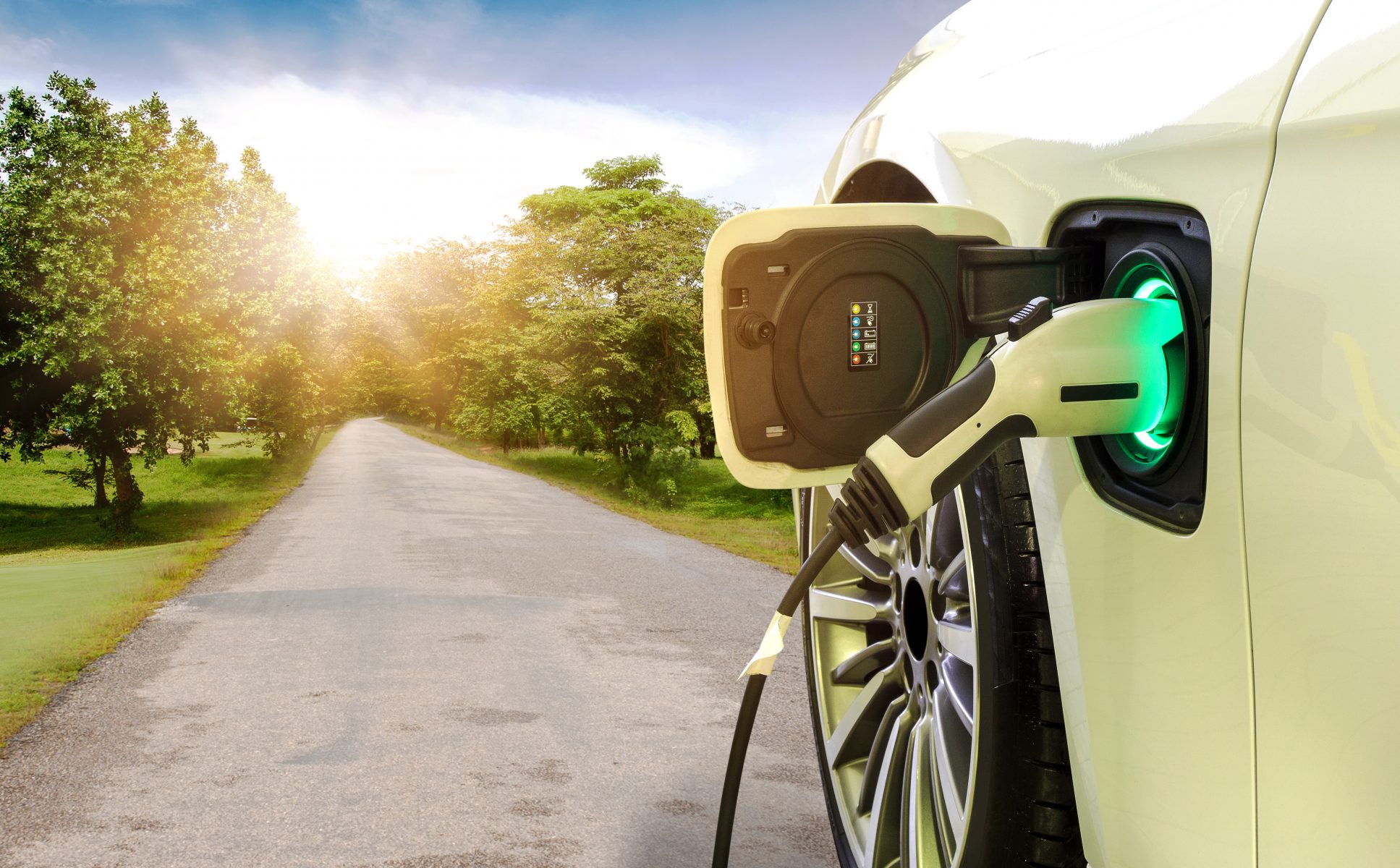INSIDER SECRET: Going all-electric for your daily drive (or even road trip) likely means huge savings from not having to refuel at gas stations, and you can save even more money by using one of the best no-annual-fee credit cards for your everyday purchases.
As recently as 10 years ago, people laughed at the idea of an electric vehicle being a viable mode of transportation for a daily short-haul driver, let alone one who goes on long road trips. They were mocked as unsafe, unreliable, and able to only travel very short distances before requiring a ton of time to recharge.
Fast forward to today. Technological advancements in batteries used in electric vehicles now allow you to travel long distances. Charging is quick and seamless. And electric car company manufacturers like Tesla have shown they’re a viable (even preferable) alternative for daily drivers, winning awards like MotorTrend’s Car of the Year.

Electric vehicles can also be much more economical. I personally own a Tesla Model S, and it has saved me over $500 a month on gas. Over an 8-year period of ownership, that will add up to $48,000.
(Note: If you decide to go all-electric, you probably won’t have much use for a gas credit card. That’s where some of the best no-annual-fee credit cards can be a great substitute. These cards don’t cost you anything to keep open and offer a strong rewards rate on everyday purchases.)
To give you confidence that an electric vehicle can be used for traveling long distances, we’ll go over current trends and options, as well as some of the pros and cons compared to traditional gasoline-powered vehicles.
Electric vehicle options
If you’re thinking about going electric, you can choose between a hybrid car or a fully electric vehicle.
Hybrid vehicles use two different types of power. The most common ones combine a gasoline-powered engine with an electric motor. Some of the most efficient hybrids have a fuel efficiency rated as high as 60 mpg on the highway, according to CarsDirect. That’s a lot higher than the overall average U.S. vehicle fuel economy, which Reuters says is 24.7 mpg.
Fully electric vehicles, however, deliver the most in terms of fuel efficiency. Vehicles like the Tesla Model 3 have been rated as high as 136 mpg equivalent (the EPA energy measurement for electric vehicles), and can save you tons of money you would otherwise spend on gas.
Road trips in an electric vehicle
With technological advancements in batteries, electric vehicles can now go just as far on a charge as gasoline-powered cars can on a tank of gas.
According to Business Insider, here are some of the top-selling electric vehicles, along with their top battery range:
- Tesla Model 3 – 310 miles
- Tesla Model S – 370 miles
- Tesla Model X – 325 miles
- Chevrolet Bolt EV – 238 miles
- Nissan Leaf – 226 miles
- BMW i3 – 153 miles (up to 200 miles with range extender)
- Volkswagen e-Golf – 125 miles
- Audi e-Tron – 204 miles
- Jaguar I-Pace – 234 miles
- Smart EQ Fortwo – 58 miles
Making your road trip seamless
There are a number of things you can do to make a road trip in an electric or hybrid vehicle seamless, such as planning your route to include charging stations, making use of EV-specific perks, staying close to large cities, driving efficiently and more.
Charging
Today, charging an electric vehicle can be done quickly and conveniently, both at home and on the road.
At-home charging
One of the greatest advantages of owning an electric vehicle is the fact that you can charge your car on your own time and in the safety, comfort and convenience of your own property. In other words, you won’t have to make a special trip to a gas station to refuel.
The popular YouTube channel Like Tesla cites the following data points in one of their videos:
- According to a study done by Kelly Blue Book, the average length of car ownership is five years
- The average person drives 37 miles per day while getting 24 mpg
- With those numbers in mind, the average person would need to refuel once every nine days
- Doing the math, that’s 40 stops at a gas station per year (365 days per year/nine days)
Assuming it takes five minutes to refuel, that’s at least 200 minutes per year the driver of a gasoline-powered car spends at gas stations, versus zero for an electric vehicle if you have access to a convenient place to charge it when it is not in use (i.e. at night while you sleep).
If this sounds appealing to you, do keep in mind that you will need to have a charging station installed by an electrician, which can be an added cost of a few hundred dollars. You’ll also want to make sure that installing a charging station is allowed, depending on your living arrangement.
Those living in apartments or condominiums, for instance, may not have the physical space necessary to install a charging station. In some cases, you may have to seek approval from your landlord or homeowner’s association. If charging at home isn’t possible, you’ll have to rely on public charging stations which can be far less convenient than refueling in a gasoline-powered car.
Destination charging
Charging your car on a long road trip can be just as seamless as charging art home because of the number of public charging stations now available throughout the U.S.
According to GreenCarCongress, there are over 68,800 Level 2 and DC Fast charging units throughout the U.S. Additionally, Tesla also has its own charging network of over 14,000 Superchargers in more than 1,600+ unique locations nationwide.
Recharging your car on a long road trip can be quite convenient. After driving for several hours, it’s not unusual for many people to want to stop for at least 15-30 minutes to eat, rest, and use the restrooms. With a vehicle like the Tesla Model 3, that’s enough time to charge the car to 80%.
Planning your route
Although electric vehicle charging stations are becoming increasingly common, it’s still a good idea to plan ahead to make sure there are enough charging stations along your specific route. Tools like EVTripPlanner can be helpful in mapping out a route for your road trip to ensure you have the ability to recharge at convenient points along the way.
Some vehicles, such as Tesla, have an in-car navigation system that includes the locations of charging stations, along with recommended stops, to ensure you do not run your battery too low.
Utilizing destination perks
As an owner of an electric vehicle, there are a number of perks that you may be able to enjoy:
- Priority parking spaces: some retail stores and shopping centers will have special designated parking spaces right up front for electric vehicles. These can save you tons of time because you can skip having to circle a busy parking lot for a spot.
- HOV carpool lane access: depending on the state in which you reside, you may be eligible to apply for HOV lane stickers that will grant you access to the carpool lanes even if you are traveling solo. If you live in a busy metropolitan area like I do, carpool lanes can easily shave off 15-30 minutes off your commute.
- Free valet parking and hotel charging: some hotels offer free valet parking and destination charging. This can save you the trouble of having to make a special trip to find a charging station before or after your arrival to the hotel. Not all hotel locations will offer this so you’ll need to check ahead of time, but some hotel chains that offer this include:
- Marriott
- Holiday Inn
- Best Western
- Hyatt
Stay closer to cities
Large cities typically have a higher density of charging stations. Tesla Superchargers, for instance, are typically located in large shopping centers or within walking distance to restaurants and entertainment areas.
For anyone looking to own or rent an electric vehicle, living in or around a large city likely means you’ll have easy access to a strong public charging infrastructure to support your daily driving needs.
Here is a list of top EV-friendly cities, according to AutoBlog:
- Portland, Oregon
- Washington, D.C.
- Baltimore
- New York
- Denver
- Los Angeles
- Atlanta
- Chicago
- Austin
- San Francisco
Drive efficiently
If you’re looking to skip as many charging stations as possible or are worried about running out of juice before your next stop, there are a few things you can do to improve your car’s fuel efficiency.
Not using your car’s air conditioning or other accessories are two small things that can help. But by and large, the single largest thing affecting your car’s range is your driving style.
Speed is one of the biggest items that can negatively affect your range. The faster you go, the more aerodynamic resistance will come into play. Simply put: slow down and limit your top speed to significantly improve your range. You can also avoid “jackrabbit” starts, and instead take it nice and easy on the accelerator.
Drafting is another strategy you can use to improve your car’s efficiency. By driving behind another large vehicle, you can improve your own vehicle’s fuel efficiency because you’ll have a lot less aerodynamic resistance to cut through.
Keep in mind that altitude, temperature, and weather conditions may also affect your vehicle’s range. Because you don’t have control over those factors, it’s a good idea to build in an appropriate buffer to ensure you don’t run out of battery life.
Don’t push your limits
It’s never a good idea to run your car’s gas tank down to zero, but it goes doubly-true for an electric vehicle. Even though your car’s battery reading might indicate it has a few miles left, it’s largely dependent on the accuracy of that reading and your battery’s calibration. Your battery’s age, health, temperature and weather conditions are just a few factors that could affect the accuracy of that reading. Because of this, there have been few reports of people’s cars running out of battery even though the battery gauge indicated it still had several miles left.
The best thing to do is to keep a buffer of at least 10-15 miles to avoid being stranded.
If you run out of battery
If you do happen to run out of battery power and find yourself stranded, roadside assistance should be your first call. Depending on the make and model of your vehicle, some roadside assistance services may be able to provide charging services so that you can make it to the nearest charging station. AAA, for instance, offers these services in certain locations. In other cases, your car may have to be towed to a charging station.
Bottom line
Thanks to technological advancements, a road trip in an electric vehicle is not only possible but can be more preferable compared to a more traditional gasoline-powered car. Electric vehicles nowadays can drive many hundreds of miles on a single charge, are much more economical and can be recharged quickly and conveniently at home or on the road.
Plus, as an EV owner, you can take advantage of special perks like carpool lane access, priority parking space in certain shopping centers, free valet parking, free hotel charging and more.
If you’ve taken a road trip in an electric vehicle, let us know what your experience was like in the comments below.
For the latest tips and tricks on saving money on your travels, please subscribe to the Million Mile Secrets daily email newsletter.




